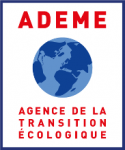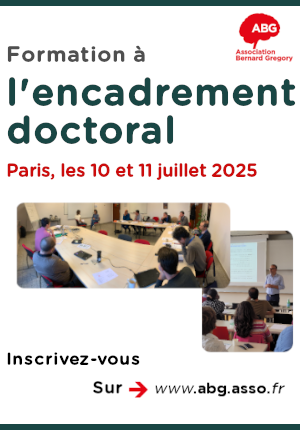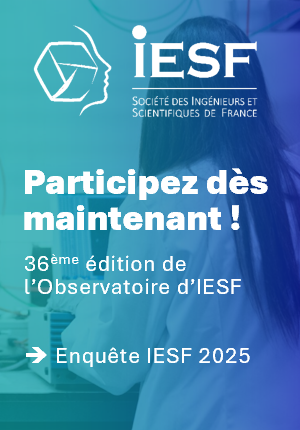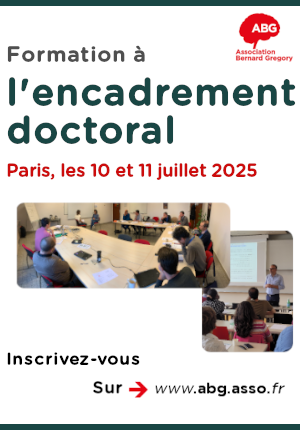Apport de la paléointensité monocristalline à l'évolution du champ magnétique terrestre au cours du Paléozoïque // The contribution of single-crystal paleointensity to the evolution of the Earth's magnetic field during the Paleozoic Era
|
ABG-130491
ADUM-62464 |
Thesis topic | |
| 2025-04-04 |
Université de Montpellier
Montpellier cédex 5 - France
Apport de la paléointensité monocristalline à l'évolution du champ magnétique terrestre au cours du Paléozoïque // The contribution of single-crystal paleointensity to the evolution of the Earth's magnetic field during the Paleozoic Era
- Earth, universe, space sciences
Paléointensité, paléomagnétisme, Paléozoïque, Gondwana
Paleointensity, paleomagnetism, Paleozoic, Gondwana
Paleointensity, paleomagnetism, Paleozoic, Gondwana
Topic description
Le champ magnétique terrestre (CMT) joue un rôle clé dans la compréhension de l'évolution de la planète, de son climat et de son habitabilité depuis 4.5 milliards d'années (Shahar et al. 2019). Le paléomagnétisme, qui permet d'étudier les variations du CMT dans le passé repose sur la capacité des roches à acquérir une aimantation thermorémanente suffisamment stable pour être préservée au cours du temps. La paléointensité, qui mesure l'intensité du champ magnétique terrestre enregistrée dans les roches anciennes, a ainsi permis d'approfondir nos connaissances concernant les variations de l'intensité de notre bouclier et l'évolution du noyau terrestre de la géodynamo.
Cependant, extraire des données de paléointensité à partir de roches Précambriennes est extrêmement difficile. En effet, une roche contient généralement un mélange de grains magnétiques, de différentes tailles et de compositions, qui peuvent avoir subi des transformations thermiques ou chimiques après leur formation (métamorphisme, altération hydrothermale), ce qui peut biaiser les mesures (Tauxe et al. 2021).
La technique de paléointensité monocristalline, qui repose sur l'analyse de cristaux de silicates millimétriques individuels dans des échantillons de roches, offre une approche prometteuse pour obtenir des données plus précises et plus fiables sur l'intensité du champ magnétique passé qu'avec les méthodes conventionnelles sur « roches totales » (Cottrell and Tarduno 2000; Tarduno 2009). Elle présente un double avantage : (i) les cristaux de silicates jouent le rôle de capsules de protection pour les millions d'inclusions magnétiques au sein du cristal en les protégeant de l'altération, et (ii) en raison de leurs tailles ces inclusions de magnétites sont généralement dans un état monodomaine à pseudo-monodomaine (<1 µm -30 nm) et sont des excellents enregistreurs du CMT. Alors que cette technique a émergé au début des années 2000, le débat paléointensité « monocristalline » versus « roche totales » continue de diviser la communauté en 2025 ! Ceci est en partie dû au fait que jusqu'en 2025 peu de laboratoire au monde possédaient un magnétomètre ultra-sensible pour mesurer la très faible aimantation de ces monocristaux de petites tailles, empêchant la répétabilité des résultats. Nous sommes à l'heure actuelle dans une période de transition marquée par l'essor des magnétomètres quantiques ultra-sensibles de dernières générations dont le seul modèle en France vient d'être installé à Géosciences Montpellier.
Grâce à de nouveaux instruments de pointe, ce projet de thèse s'attaquera au défi de la paléointensité monocristalline qui pourrait ainsi constituer un outil puissant pour retracer l'évolution passé du champ magnétique terrestre. Cette thèse sera au cœur du développement de protocoles innovants pour déterminer la paléointensité avec notamment le développement de la « paléointensité monocristalline multispécimen ».
Alors que nous ne savons pas exactement depuis quand la Terre possède un champ magnétique similaire à l'actuel, cette thèse se dédiera à l'étude du Paléozoïque, une période clé de l'histoire de la Terre (539 à 252 millions d'années) caractérisée par d'importants bouleversements géologiques et biologiques. La paléogeographie de cette période est marquée par l'existence du mégacontinent Gondwana qui domine l'hémisphère sud de la planète. Les unités géologiques ciblées pour l'échantillonnage seront situées au sein des continents qui composent l'ouest du Gondwana (Afrique et Amérique du Sud). Les résultats de cette thèse pourraient considérablement améliorer notre compréhension de la dynamique du champ magnétique terrestre au cours du Paléozoïque. Une période clé concernant l'habitabilité de notre planète qui a vu l'explosion de la vie complexe, posé les bases de la vie terrestre moderne et préparé le terrain pour l'ère mésozoïque, dominée par les dinosaures.
------------------------------------------------------------------------------------------------------------------------------------------------------------------------
------------------------------------------------------------------------------------------------------------------------------------------------------------------------
The Earth's magnetic field (EMF) plays a key role in understanding the evolution of the planet, its climate, and its habitability over the past 4.5 billion years (Shahar et al. 2019). Paleomagnetism, which allows us to study past variations of the EMF, relies on the ability of rocks to acquire a thermoremanent magnetization that remains stable over time. Paleointensity, which measures the intensity of Earth's magnetic field recorded in ancient rocks, has deepened our knowledge of the variations in our planet's magnetic shield and the evolution of Earth's core and geodynamo.
However, extracting paleointensity data from Precambrian rocks is extremely challenging. A rock typically contains a mixture of magnetic grains of different sizes and compositions, which may have undergone thermal or chemical transformations after their formation (e.g., metamorphism, hydrothermal alteration), potentially biasing measurements (Tauxe et al. 2021).
The single-crystal paleointensity technique, which involves analyzing individual millimeter-sized silicate crystals in rock samples, offers a promising approach for obtaining more precise and reliable data on past magnetic field intensity compared to conventional whole-rock methods (Cottrell and Tarduno 2000; Tarduno 2009). This method presents two main advantages: (i) silicate crystals act as protective capsules for millions of magnetic inclusions within the crystal, shielding them from alteration, and (ii) due to their size, these magnetite inclusions are generally in a single-domain to pseudo-single-domain state (<1 µm – 30 nm) and serve as excellent recorders of the EMF. Although this technique emerged in the early 2000s, the debate between 'single-crystal' and 'whole-rock' paleointensity measurements remains unresolved in 2025! This is partly because, until recently, very few laboratories worldwide had access to ultra-sensitive magnetometers capable of measuring the extremely weak magnetization of these small crystals, making it difficult to reproduce results. We are currently in a transition period marked by the rise of next-generation ultra-sensitive quantum magnetometers, with the only model in France recently installed at Géosciences Montpellier.
Thanks to these cutting-edge instruments, this PhD project will tackle the challenge of single-crystal paleointensity, which could become a powerful tool for reconstructing the evolution of Earth's magnetic field. This thesis will be at the heart of the development of innovative protocols for determining paleointensity, in particular the development of 'multispecimen single-crystal paleointensity'.
While we don't know exactly how long the Earth has had a magnetic field similar to the present, this thesis will focus on the Paleozoic, a key period in the Earth's history (539 to 252 million years ago) characterized by major geological and biological upheavals. The paleogeography of this period is marked by the existence of the Gondwana megacontinent, which dominates the planet's southern hemisphere. The geological units targeted for sampling will be located within the continents that make up western Gondwana (Africa and South America). The results of this thesis could considerably improve our understanding of the dynamics of the Earth's magnetic field during the Paleozoic. A key period for the habitability of our planet that saw the explosion of complex life, laid the foundations for modern terrestrial life and paved the way for the Mesozoic era, dominated by dinosaurs.
------------------------------------------------------------------------------------------------------------------------------------------------------------------------
------------------------------------------------------------------------------------------------------------------------------------------------------------------------
Début de la thèse : 01/10/2025
Cependant, extraire des données de paléointensité à partir de roches Précambriennes est extrêmement difficile. En effet, une roche contient généralement un mélange de grains magnétiques, de différentes tailles et de compositions, qui peuvent avoir subi des transformations thermiques ou chimiques après leur formation (métamorphisme, altération hydrothermale), ce qui peut biaiser les mesures (Tauxe et al. 2021).
La technique de paléointensité monocristalline, qui repose sur l'analyse de cristaux de silicates millimétriques individuels dans des échantillons de roches, offre une approche prometteuse pour obtenir des données plus précises et plus fiables sur l'intensité du champ magnétique passé qu'avec les méthodes conventionnelles sur « roches totales » (Cottrell and Tarduno 2000; Tarduno 2009). Elle présente un double avantage : (i) les cristaux de silicates jouent le rôle de capsules de protection pour les millions d'inclusions magnétiques au sein du cristal en les protégeant de l'altération, et (ii) en raison de leurs tailles ces inclusions de magnétites sont généralement dans un état monodomaine à pseudo-monodomaine (<1 µm -30 nm) et sont des excellents enregistreurs du CMT. Alors que cette technique a émergé au début des années 2000, le débat paléointensité « monocristalline » versus « roche totales » continue de diviser la communauté en 2025 ! Ceci est en partie dû au fait que jusqu'en 2025 peu de laboratoire au monde possédaient un magnétomètre ultra-sensible pour mesurer la très faible aimantation de ces monocristaux de petites tailles, empêchant la répétabilité des résultats. Nous sommes à l'heure actuelle dans une période de transition marquée par l'essor des magnétomètres quantiques ultra-sensibles de dernières générations dont le seul modèle en France vient d'être installé à Géosciences Montpellier.
Grâce à de nouveaux instruments de pointe, ce projet de thèse s'attaquera au défi de la paléointensité monocristalline qui pourrait ainsi constituer un outil puissant pour retracer l'évolution passé du champ magnétique terrestre. Cette thèse sera au cœur du développement de protocoles innovants pour déterminer la paléointensité avec notamment le développement de la « paléointensité monocristalline multispécimen ».
Alors que nous ne savons pas exactement depuis quand la Terre possède un champ magnétique similaire à l'actuel, cette thèse se dédiera à l'étude du Paléozoïque, une période clé de l'histoire de la Terre (539 à 252 millions d'années) caractérisée par d'importants bouleversements géologiques et biologiques. La paléogeographie de cette période est marquée par l'existence du mégacontinent Gondwana qui domine l'hémisphère sud de la planète. Les unités géologiques ciblées pour l'échantillonnage seront situées au sein des continents qui composent l'ouest du Gondwana (Afrique et Amérique du Sud). Les résultats de cette thèse pourraient considérablement améliorer notre compréhension de la dynamique du champ magnétique terrestre au cours du Paléozoïque. Une période clé concernant l'habitabilité de notre planète qui a vu l'explosion de la vie complexe, posé les bases de la vie terrestre moderne et préparé le terrain pour l'ère mésozoïque, dominée par les dinosaures.
------------------------------------------------------------------------------------------------------------------------------------------------------------------------
------------------------------------------------------------------------------------------------------------------------------------------------------------------------
The Earth's magnetic field (EMF) plays a key role in understanding the evolution of the planet, its climate, and its habitability over the past 4.5 billion years (Shahar et al. 2019). Paleomagnetism, which allows us to study past variations of the EMF, relies on the ability of rocks to acquire a thermoremanent magnetization that remains stable over time. Paleointensity, which measures the intensity of Earth's magnetic field recorded in ancient rocks, has deepened our knowledge of the variations in our planet's magnetic shield and the evolution of Earth's core and geodynamo.
However, extracting paleointensity data from Precambrian rocks is extremely challenging. A rock typically contains a mixture of magnetic grains of different sizes and compositions, which may have undergone thermal or chemical transformations after their formation (e.g., metamorphism, hydrothermal alteration), potentially biasing measurements (Tauxe et al. 2021).
The single-crystal paleointensity technique, which involves analyzing individual millimeter-sized silicate crystals in rock samples, offers a promising approach for obtaining more precise and reliable data on past magnetic field intensity compared to conventional whole-rock methods (Cottrell and Tarduno 2000; Tarduno 2009). This method presents two main advantages: (i) silicate crystals act as protective capsules for millions of magnetic inclusions within the crystal, shielding them from alteration, and (ii) due to their size, these magnetite inclusions are generally in a single-domain to pseudo-single-domain state (<1 µm – 30 nm) and serve as excellent recorders of the EMF. Although this technique emerged in the early 2000s, the debate between 'single-crystal' and 'whole-rock' paleointensity measurements remains unresolved in 2025! This is partly because, until recently, very few laboratories worldwide had access to ultra-sensitive magnetometers capable of measuring the extremely weak magnetization of these small crystals, making it difficult to reproduce results. We are currently in a transition period marked by the rise of next-generation ultra-sensitive quantum magnetometers, with the only model in France recently installed at Géosciences Montpellier.
Thanks to these cutting-edge instruments, this PhD project will tackle the challenge of single-crystal paleointensity, which could become a powerful tool for reconstructing the evolution of Earth's magnetic field. This thesis will be at the heart of the development of innovative protocols for determining paleointensity, in particular the development of 'multispecimen single-crystal paleointensity'.
While we don't know exactly how long the Earth has had a magnetic field similar to the present, this thesis will focus on the Paleozoic, a key period in the Earth's history (539 to 252 million years ago) characterized by major geological and biological upheavals. The paleogeography of this period is marked by the existence of the Gondwana megacontinent, which dominates the planet's southern hemisphere. The geological units targeted for sampling will be located within the continents that make up western Gondwana (Africa and South America). The results of this thesis could considerably improve our understanding of the dynamics of the Earth's magnetic field during the Paleozoic. A key period for the habitability of our planet that saw the explosion of complex life, laid the foundations for modern terrestrial life and paved the way for the Mesozoic era, dominated by dinosaurs.
------------------------------------------------------------------------------------------------------------------------------------------------------------------------
------------------------------------------------------------------------------------------------------------------------------------------------------------------------
Début de la thèse : 01/10/2025
Funding category
Funding further details
Concours GAIA
Presentation of host institution and host laboratory
Université de Montpellier
Institution awarding doctoral degree
Université de Montpellier
Graduate school
584 GAIA - Biodiversité, Agriculture, Alimentation, Environnement, Terre, Eau
Candidate's profile
Le candidat rejoindra un groupe de chercheurs actifs à Géosciences Montpellier en Paléomagnétisme et magnétisme des roches. Bien que cela ne soit pas une exigence, une expérience préalable en paléointensité/paléomagnétisme sera très appréciée. Les candidats peuvent être de toutes nationalités. Les candidats doivent être titulaires d'un Master 2 (avec expérience de la recherche). Etant donné que ce projet est porté vers l'international, l'habilité du candidat à communiquer en anglais, espagnol est un avantage.
The candidate will join a group of researchers active at Géosciences Montpellier in Paleomagnetism and Rock Magnetism. Although not a requirement, previous experience in paleointensity/paleomagnetism will be highly appreciated. Candidates can be of any nationality. Candidates must hold a Master 2 degree (with research experience). As this is an international project, the candidate's ability to communicate in English and Spanish is an advantage.
The candidate will join a group of researchers active at Géosciences Montpellier in Paleomagnetism and Rock Magnetism. Although not a requirement, previous experience in paleointensity/paleomagnetism will be highly appreciated. Candidates can be of any nationality. Candidates must hold a Master 2 degree (with research experience). As this is an international project, the candidate's ability to communicate in English and Spanish is an advantage.
2025-05-05
Apply
Close
Vous avez déjà un compte ?
Nouvel utilisateur ?
More information about ABG?
Get ABG’s monthly newsletters including news, job offers, grants & fellowships and a selection of relevant events…
Discover our members
 CASDEN
CASDEN  Groupe AFNOR - Association française de normalisation
Groupe AFNOR - Association française de normalisation  MabDesign
MabDesign  Ifremer
Ifremer  Institut Sup'biotech de Paris
Institut Sup'biotech de Paris  Tecknowmetrix
Tecknowmetrix  ONERA - The French Aerospace Lab
ONERA - The French Aerospace Lab  CESI
CESI  ANRT
ANRT  Laboratoire National de Métrologie et d'Essais - LNE
Laboratoire National de Métrologie et d'Essais - LNE  MabDesign
MabDesign  ADEME
ADEME  Généthon
Généthon  PhDOOC
PhDOOC  SUEZ
SUEZ  TotalEnergies
TotalEnergies  Aérocentre, Pôle d'excellence régional
Aérocentre, Pôle d'excellence régional  ASNR - Autorité de sûreté nucléaire et de radioprotection - Siège
ASNR - Autorité de sûreté nucléaire et de radioprotection - Siège  Nokia Bell Labs France
Nokia Bell Labs France





